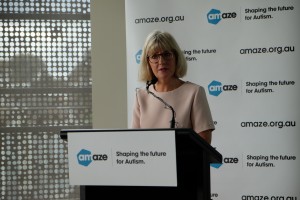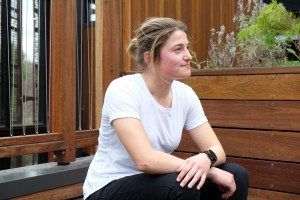Amaze delivers damning report card: The Australian education system is failing autistic students
Posted on
Autistic students have the worst educational outcomes of any students with a disability, with almost all (97%) facing difficulties in their education and more than half (56%) saying they’ve been treated unfairly, according to ground-breaking research.
The research report – commissioned by Amaze, Victoria’s peak body for autistic people and their families, by the Social Research Centre at Australian National University and the Centre for Health and Social Research at the Australian Catholic University – uncovers how inadequate supports and limited adjustments in Australian schools are negatively impacting autistic students’ outcomes and experiences.
Amaze Chair Judy Brewer, AO, said: “Today is the very important release of a second report from the Community Attitudes research that we are doing at Amaze.
“I’m a parent of a young autistic man, he’s about to turn 25, and I can tell you there has been nothing more challenging in those 25 years than finding an education for Harrison. Seven schools, home schooling, the works.
“For families, for autistic people, education is that most difficult period of time. It should be a time of celebration. It should be a time of learning, a time of friendship, but for so many it is not. We have to do better.
“We hope today is the start of making a difference to our families and autistic people, young and old, in Victoria.
“So we’re going to start from the point of what we know, rather than what we think. And that’s why research is so important _ to underpin what we say, and particularly leading up to an election. People say a lot of things, but if it’s not based on evidence, it doesn’t really mean much.”
The research shows 35% of autistic students achieve Year 10 or below, compared with 17% of the general student population, and are 50% less likely to obtain a bachelor’s degree compared to students with other disabilities.
Many autistic students change schools multiple times, with these rates doubling from primary school (24%) to secondary school (44%) as students’ needs remain unmet.
More than 1 in 100 Australians are autistic, making it likely that there is an autistic student in almost every classroom in Australia; however, a lack of understanding of autism within the education system means we are failing these students.
“This research tells a disappointing story. More must be done to support autistic students at school to ensure their strengths and differences are supported to achieve,” Amaze CEO Fiona Sharkie said.
“When we see that more than 50% of Australians believe or are unsure if schools can refuse to enrol autistic children, we know that autistic students face barriers in accessing an education before they even reach the school gate,” she added.
“There is strong public support for much needed change, with 74.1% of Australians agreeing that schools should make adjustments to improve the educational experiences and outcomes for autistic students.
“Whilst more financial resourcing is needed to build the capacity of schools to support autistic students, a critical first step is for schools and educators to actively promote and embrace a culture of inclusion, where difference is seen as a benefit not a burden.”
Elise Muller is just one example of how even a small adjustment can transform a student’s experience.
Her autism was wrongly perceived as ‘naughty’ behaviour, leading to misconceptions about her desire or ability to participate and learn. Support from a teacher made Elise feel safe and encouraged her to use her personal strengths, inspiring confidence and belief from teachers and peers that had been missing.
Elise said, “I could sense that belief in me. I finished high school, which I never thought I could do. I’m also a personal trainer and mentor young people with autism”.
In response to the report’s compelling findings, Amaze has released a list of 10 practical adjustments that support autistic students, which schools can adopt to improve students’ experiences and outcomes.
Schools may find they are employing some of these adjustments already and the list will provide further ideas to create a supportive educational experience for autistic students.
DO TEN THINGS FOR AUTISM IN EDUCATION
- Modify the curriculum
- Change assessment techniques
- Extra classroom support
- Establish clear routines and avoid changes
- Adjust sensory environment (noise, light, smell, textures)
- Support autistic students outside the classroom
- Clear communication between school and home
- Deal with bullying effectively
- Working with other students
- Create a ‘classroom timeout break’
Find out more at: www.onethingforautism.com.au
Background information
About autism
- Autism is a neurodevelopmental lifelong condition, for which there is no cure.
- Over 1 in 100 Australians are autistic.
- Autism affects every person differently. Autism can look like:
- Challenges with communication and interacting with others
- Repetitive and different behaviours, moving in different ways
- Strong interest in one topic or subject
- Unusual reactions to what they see, hear, smell, touch or taste
- Preference for routines and dislike change
- Currently 3 times as many males are diagnosed with autism than females, although female rates are rising.
- The unemployment rate for autistic adults (31.6%) is more than three times the rate for people with disability (10.0%) and almost six times the rate of people without disability (5.3%).
- 28% of participants in the National Disability Insurance Scheme are autistic – the second highest diagnostic group within the scheme.
- There is no known cause of autism, though research is ongoing to learn more about this. Currently, it is believed to result from changes to the development and growth of the brain, which may be caused by a combination of factors, including environmental and genetic ones. Autism is not caused by vaccination or other medical treatment.


